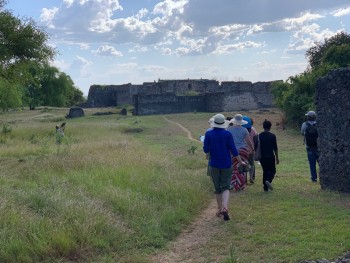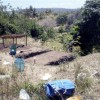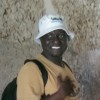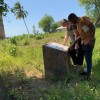This is the first ever blog post for the Kilwa fieldwork by the CONCH team! Blogu hii itaandikwa kwa kutumia lugha za Kiswahili na Kiingereza. It is written by Noel Fidelislasway (University of Dar es Salaam) and Elena Murray (University of York), both masters students in heritage management. It gives an introduction to the Kilwa fieldwork led by Stephanie Wynne-Jones, Sara Perry & Dav Smith, as part of the CONCH project. This blog will be written in both Swahili and English.
*******************************************
Utangulizi wa mradi.
Mwaka huu mradi wa CONCH ulijikita katika Wilaya ya Kilwa, Tanzania, hususani maeneo mawili makuu: Kilwa Kisiwani na Songo Mnara. Maeneo haya mawili kwa pamoja yalianishwa na UNESCO kuwa moja kati ya maeneo saba ya urithi wa dunia yanayopatikana Tanzania. Katika maeneo yanapatikana magofu makubwa zaidi Africa, eneo la kusini mwa Jangwa Sahara. Wakati tukiwa Kilwa, timu ya mradi wa CONCH ilijumishwa na (wafanyakazi na wanafunzi kutoka Chuo Kikuu cha York, wanafunzi kutoka Chuo Kikuu ach Dar es Salaam). Tulifanya kazi na ofisi ya Mambo ya Kale, Waongoza wa talii na wawakilishi kutoka maeneo yote mawili ya urithi wa dunia, kwa nia ya kusaidia kutafsiri utithi muhimu wa jamii. Magofu ya Kilwa Kisiwani na Songo Mnara yana historia kubwa, ambayo itaelezewa kidogo kwenye blogu hii, pamoja na tulivyoanza kufanya kazi ya kutathmini taarifa na maelezo ya maeoneo yote mawaili.
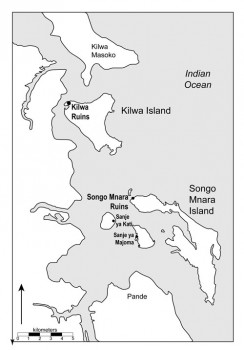
Figure 1: Map showing the location of Kilwa Kisiwani and Songo Mnara. (Image credit: Songo Mnara Project http://www.songomnara.rice.edu/heritage.htm)
Introduction to the project.
This year the CONCH project is focusing on the district of Kilwa, Tanzania, in particular two main sites: Kilwa Kisiwani and Songo Mnara. These two sites are joint-listed as one of the seven UNESCO World Heritage Sites in Tanzania, and are the largest monumental ruins in sub-Saharan Africa. During our time in Kilwa, the CONCH team (consisting of staff and students from the University of York and students from the University of Dar Es Salaam) is working with the local antiquities office, tour guides, and representatives of local communities to support community-sensitive heritage interpretation. The ruins of Kilwa Kisiwani and Songo Mnara have long and complex histories, which are briefly explained in this blog. We then go on to assess the interpretation and presentation of the heritage of these two sites, using a methodology focused on ‘thinking like a visitor’.
Kilwa Kisiwani.
Kisiwa kinapatikatika kusini mwa Kilwa Masoko, na kwa usafiri wa boti tu (dakika 20). Ushahidi wa akiolojia kutoka kwenye magofu unathibitisha kuwa eneo hili lilikaliwa na watu tokea karne ya 9, na kushamiri zaidi katika karne ya 13. Maeneo muhimu Kilwa Kisiwani yameorodheshwa hapo chini.
- Gereza la Wareno la Karne ya 16
- Kasri Kubwa
- Msikiti Mkuu
- Kasri la makutani
- na magofu mengine kama Misikiti na makaburi madogo madogo bodo yanaonekana leo katika maeneo haya.
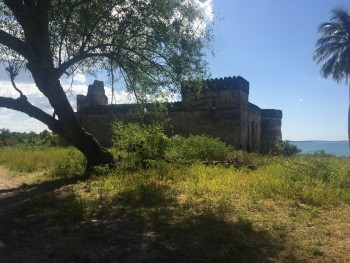
Figure 2: Ruins of Kilwa Kisiwani (Photo: Elena Murray. Click to enlarge.)
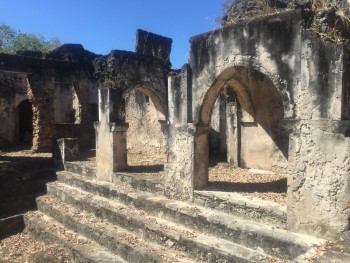
Kilwa Kisiwani is south of the town of Kilwa Masoko, only accessible by boat (20mins). Archaeological evidence from ruins tells us that the site has been occupied since the 9th century but reached peak prosperity in the 13th century. Key sites at Kilwa Kisiwani are listed below.
- Portuguese Gereza, 16th c.
- Husuni Kubwa (the Great Palace)
- Great Mosque
- Macutani Palace
- And many other smaller mosques and ruins across the island are still visible today.
Songo Mnara. Songo Mnara inapatika kusini zaidi mwa Kilwa Kisiwani, na inachukua takribani saa moja na nusu (1:30) kutoka Kilwa Masoko kwa usafiri wa boti. Eneo hili lina umri wa kati ya karne ya 14 na 15, na linajumuaisha misikiti mitano, Kasri na majenzi kadhaa ya wenyeji ambayo yanaonyesha maisha ya kila siku na utamaduni wa zamani wa waswahili.
Songo Mnara can be found further south of Kilwa Kisiwani, approximately 1.5 hours from Kilwa Masoko by boat. The site dates between the 14th and 15th centuries and includes five mosques, a palace complex and multiple domestic structures which provide an excellent insight into the everyday life and culture of the past Swahili people.
Kutembelea eneo na kufanya tathmini / Site visit and assessment.
Tulianza mradi kwa kutembelea maeneo yote mawili katika siku mbili tofauti na kufanya tathmini ya ni kwa namna gani maeneo haya yanavyowasilishwa kwa wageni kwa sasa. Kwenye kila eneo tuligawanyika katika vikundi na tathmini ilijikita katika maeneo makuu matano:
- Ujaji wa wageni
- Miundombinu
- Masimulizi na ujumbe
- Aina za taarifa
- Hadhira
Tulikaa pamoja ili kupitia na kujadili yatokanayo katika kila kikundi na kuona ni kwa namna gani matokeo ya tathmini yanaweza kuboresha uwasilishwaji wa malikale kwa baadae.
We began our project by visiting the two sites on separate days to carry out site assessments, looking at how the heritage of each site is currently presented to visitors. At each site, we split into groups to assess five main themes in order to understand the dynamic of interpretation and presentation at the two sites:
- Visitor flow
- Facilities and infrastructure
- Narrative and message
- Information resources
- Audience
We then came together to review our results and discuss how heritage presentation at the sites might be enhanced in the future.
Maeneo yote mawili yanafikika kwa usafairi wa boti tu, na watilii lazima waongozane na waongoza watalii. Maelezo ya namna kufika maeneo haya yanapatika Kilwa Masoko katika kituo cha taarifa au ofisi ya Mambo ya Kale (ambapo pia unaweza kupata waongoza watalii na kibali cha kutembelea visiwa hivi). Maeneo yote mawili yanalindwa na kutunzwa wa wenyeji wa visiwa hivi.
Ni muhimu kwa wageni kubeba maji na chakula kwakuwa huduma hizi hazipatikani muda wote. Kwa Kilwa Kisiwani, waongoza watalii huwapitisha wageni kwenye maeneo ya wenyeji ambapo unaweza kununua maji na chakula. Kwa Songo Mnara ni vigumu kwani makazi ya wenyeji yapo mbali. Pia ni muhimu kukumbuka kuwa wageni wanatakiwa kuwa na afya njema ili kuweza kutembelea na kufurahia maeneo haya kwani itawalazimu kupita kwenye njia ambazo si nzuri sana, kupanda na kushuka ngazi nyingi na kuruka kuta fupi.
Kwa kiasi kikubwa taarifa na maelezo ya maeneo yote mawili hutolewa na waongoza watalii. Kiswahili na Kiingereza ndio lugha kuu zinazotumika katika mawasiliano. Vilevile, maelezo hayo huchagizwa zaidi na masimulizi ya wenyeji wa visiwa hivi. Kuna mabango machache Kilwa Kisiwani na moja Songo Mnara yanayoelezea historia ya eneo husika.
Simulizi za maeneo yote mawili hujikita zaidi kwenye matumizi na ubunifu wa ujenzi wamagofu, ingawa kwa muda mwingine hutaja teknolojia iliyotumika kujenga na kazi za uhifadhi zinazoendelea. Kama nyongeza hujumuisha simulizi za makazi na biashara, na kwa kiasi kidogo hutaja mila na destruri za zamani na sasa za wenyeji wa Kilwa Kisiwani na Songo Mnara. Wakati wa kutembea Kilwa kiswani, wageni hupita katika baadhi ya maeneo kijiji, ambayo pia huleta mjadala na maelezo kuhusu wenyeji wa sasa, lakini haitwajwi kama ni sehememu muhimu ya kutalii. Kwa Songo Mnara Kijiji kipo mbali zaidi ya kilometa tano kutoka kwenye magofu, hivyo hakihusishwi kabisa kwenye utalii. Maeneo yote hayana wageni mahususi, hivyo kuwa na aina nyingi ya kutoa taarifa. Kwa mujibu wa waongoza watalii, wageni wanaotembelea kwa wingi ni makundi ya wanafuzi wa shule za msingi na sekondari kwa kuwa historia ya maeneo haya ni sehemu ya mtaala.
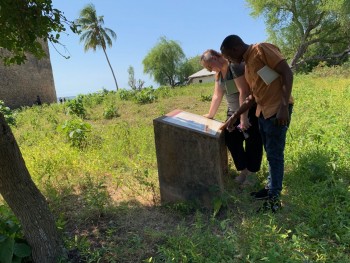
Both sites are only accessible via boat, and tourists must be assisted by a tour guide. Information for accessing both sites can be found at the Information Centre or Antiquities office in Kilwa Masoko (where it is also possible to hire a tour guide and obtain a permit to visit the islands). Both sites are maintained and guarded by local people on the island .
It is important that visitors bring their own water/food as this is not readily available at either site. At Kilwa Kisiwani, tour guides often take visitors through the village, where it is sometimes possible to purchase food and drinks from locals. However this is not possible at Songo Mnara, as the village is much further away. It is also very important to note that visitors must be physically able-bodied to tour the sites, as many of the paths are uneven, and visitors often have to climb stairs and over low walls to navigate across the site.
Tour guides provide most of the information at both sites. As far as we know the tours can only be given in Swahili and English. Furthermore, the information is often influenced by oral stories from locals on the islands. There are a few information panels at the ruins of Kilwa Kisiwani, providing basic information about the history of each ruin, however there is only one orientation panel at Songo Mnara.
The narrative focus at both sites is the function and architecture of the structures. Additional narratives involve stories of occupation and trade at the site, with little consideration given to the culture and lives of the communities who live at Kilwa Kisiwani or Songo Mnara, both in the past and in the present. During the tour of Kilwa Kisiwani, visitors must walk through part of the village on the island, however, the village at Songo Mnara is over five miles away from the ruins and therefore is not included in the tour at all. Neither site has a specific audience, meaning that there is great capacity for variety in the style and depth of interpretation. Tour guides noted that the most common form of visitor is school children, in both primary and secondary education, as the ruins are often included in the curriculum.
Je, nini kinafuata? What comes next for Kilwa?
Magofu ya kilwa Kisiwani na Songo Mnara ni ya aina yake kwa kuwa yanatoa ushahidi wa mabadiliko na muendelezo wa utamaduni wa Waswahili katika Pwani ya Afrika ya Mashariki. Hata ivyo, tathmini tuliyofanya imeonyesha kuwa, ipo haja ya kuwa na maelezo mapana na simulizi nyingi zaidi katika maeneo haya. Ili kujua zaidi ni kwa namna maeneo haya yanathaminiwa na kusimuliwa, tuliandaa vikundi vya kujadiliana kutoka ofisi ya Mambo ya Kale, waongoza watalii na jamii kutoka maeneo husika - soma chapisho katika blogu yetu kujua nini kilitokea!!
The ruins of Kilwa Kisiwani and Songo Mnara are incredible structures that stand as testament to the change and continuity of Swahili culture on the East Aftrican Coast. However, our assessments highlighted that there is a great need for further information and a wider narrative to be told at the sites. In order to find out more about how these sites are valued and presented, we carried out focus groups with the antiquities office, tour guides and local community members - read our next blog post to find out what happened!
